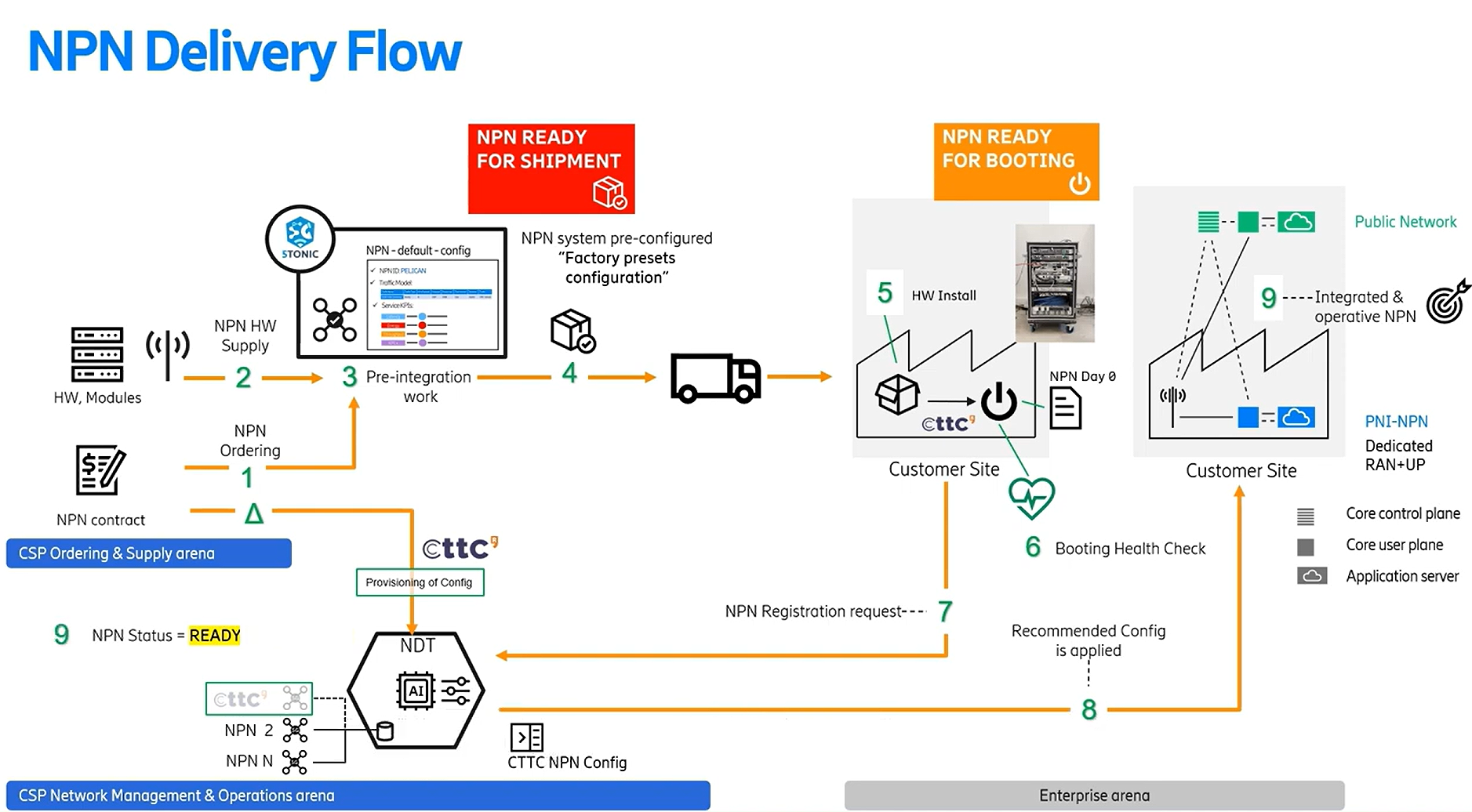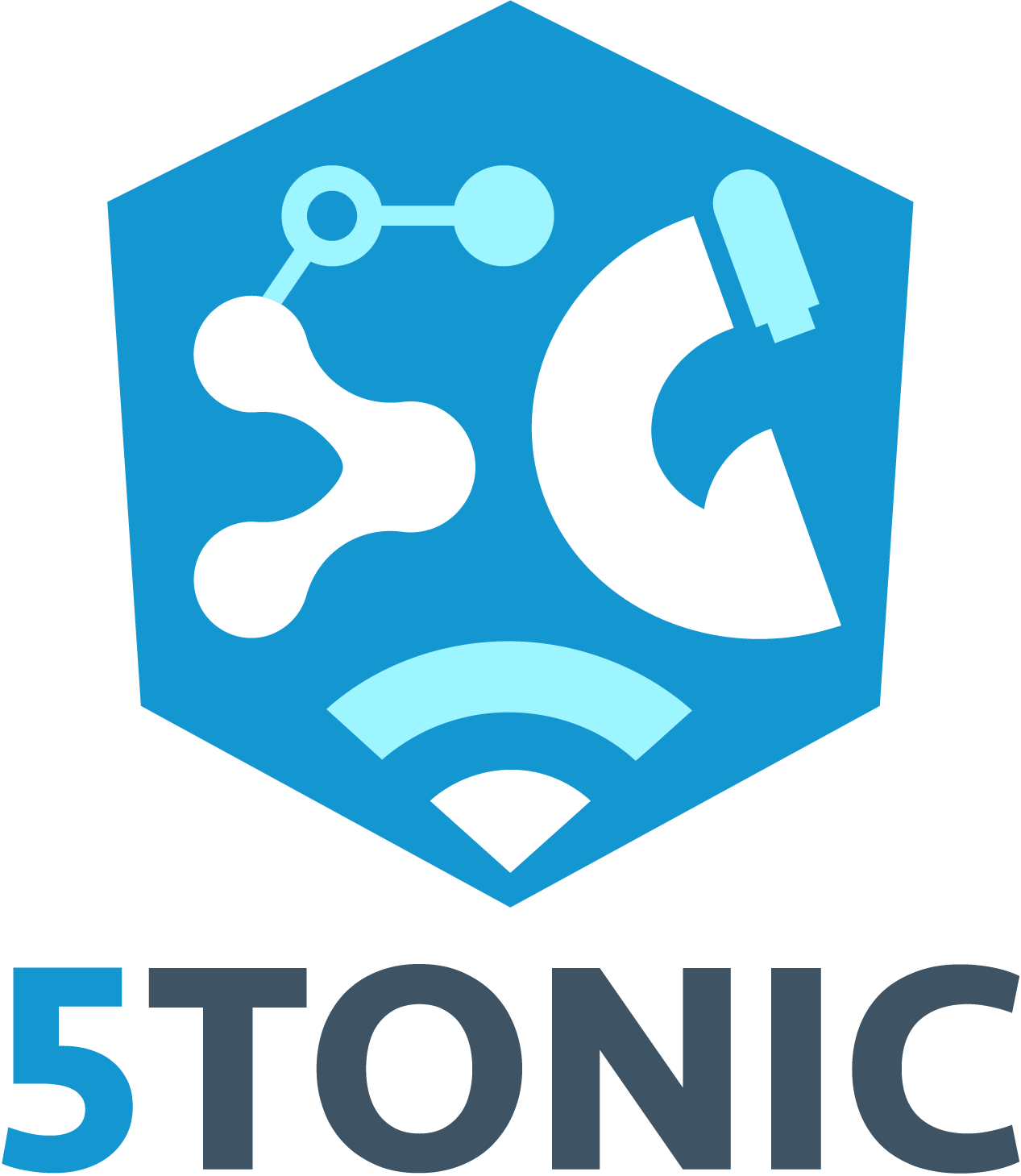Simplifying 5G Network Deployment with Zero-Touch Provisioning
Our lab focuses on creating an ecosystem investigation for new generations of networks, working on projects introducing 5G into a greener, smarter, and more flexible future. As we explained in our previous blog, “The virtuous cycle of 5G network optimisation: how data drives connectivity performance in private networks”, we participated in several projects from the UNICO 5G R&D programme, which involved four proof of concepts (PoC). Consequently, this blog will explain one of them: the Zero-Touch Non-Public Networks, part of the 6G BLUR project.
This PoC, worked jointly with our founder Telefónica, our member Ericsson, and under the coordination of the Centre Tecnològic de Telecomunicacions de Catalunya (CTTC), encourages connectivity services to achieve zero-touch provisioning for enterprise customers during delivery. Doing so, businesses across various industrial sectors will benefit from a reduced cost and effort private 5G network without the complexity and high costs traditionally associated with its deployment. Furthermore, it stimulates the 5G adoption in the enterprise domain with three key innovative concepts:
- 3GPP PNI-NPN model: to integrate the small customer private network into the public service provider network. The radio and the user plane part are delivered on the customer side, and the rest of the 5G core is kept on the operator’s central premises.
- Plug and play installation and configuration of the private 5G network.
- NPN Digital Twin with AI and machine learning capabilities: to get the final configuration of an NPN 5G System according to the intent-based declaration of customer target KPIs.

The joint quality of these three concepts is to provide Zero-Touch capabilities to the 5G NPN network at the start of the process. This will instantly adapt to the public network and edge environment, while self-configuring to meet the desired performance targets.
5G research highlights automation and efficiency as crucial for deploying next-generation networks. Therefore, this PoC demonstrates the rapid configuration, delivery, and operationalisation of an end-to-end NPN with minimal human effort:
- The customer’s network contract triggers the NPN ordering.
- Modules and equipment are prepared in the hardware supply phase.
- The NPN is characterised in the pre-integration process for the customer’s use case. When it is complete, the NPN is ready for shipment.
- The NPN system arrives with a pre-configured setup tailored to the customer’s IP plan from day zero.
- Upon arrival at the customer’s location, hardware installation and cabling begin. The final configuration, previously defined in the network digital twin and agreed upon with the customer, must be provisioned before powering on. Subsequently, the NPN is ready to boot.
- The system logic performs a boot health check to verify the status of each NPN component.
- The NPN sends a registration request to the Network Digital Twin if accurate.
- The Network Digital Twin applies the final configuration to the NPN.
- A private network is running and providing service in a few minutes.
This proof of concept offers a vision of future network automation, demonstrating the transformative power of zero-touch network deployment for businesses and industrial settings. This PoC establishes a foundation for scalable, dependable, and smart non-public network (NPN) deployments by utilising a Network Digital Twin and incorporating automation throughout the deployment process.
This fully automated process led to valuable outcomes, learnings, and impacts. Most notably, thanks to self-configuration and self-integration, an operational private 5G network was achieved in just a few minutes. Moreover, this zero-touch experience was facilitated by strong synergies between the Network Digital Twin and the NPN through the process. Consequently, this approach paves the way for scalable industrial applications, delivering unique services rapidly and cost-effectively.
Projects like this should be developed in open research spaces such as 5TONIC. In this way, the transition from 5G to 6G is within our reach, allowing its adoption in various industrial sectors. In addition, the participation of companies, suppliers, or users from vertical industries in the telecommunications world constitutes an ecosystem that proposes new solutions, drives development, and designs new generations of mobile networks. In this way, it is possible to take advantage of the research carried out so that the technologies under development reach their maximum potential in terms of profitability, competence, and quality.

